The History Of Mazda

Mazda Motor Corporation (マツダ株式会社, Matsuda Kabushiki-gaisha?) (TYO: 7261) is a Japanese automotive manufacturer based in Hiroshima, Japan.
During 2007, Mazda produced almost 1.3 million vehicles for global sales. The majority of these (nearly 1 million) were produced in the company's Japanese plants, with the remainder coming from a variety of other plants worldwide.
It is said that Mazda coincides with the anglicized pronunciation of the founder's name, Jujiro Matsuda, who was interested in spirituality, and chose to rename the firm in honor of both his family and Zoroastrianism. The word Mazda derives from Ahura Mazda, the Avestan language name for a divinity exalted by the ancient Iranian prophet Zoroaster, as the source of wisdom, intelligence and harmony.
In Japanese, the company's name has always been pronounced and spelled as "Matsuda", the name of the founder. Television ads for Mazda automobiles in the United States use a pronunciation where the initial vowel sound is the 'a' in "father", while Canadian Mazda advertisements pronounce the company's name with the initial "a" sound of the word "has". The initial vowel sounds (in the American and Canadian advertisements) are references to the first and last A sounds in the original Persian pronunciation.
Mazda began as the Toyo Cork Kogyo Co., Ltd, founded in Japan in 1920. Toyo Cork Kogyo renamed itself to Toyo Kogyo Co., Ltd. in 1927. Toyo Kogyo moved from manufacturing machine tools to vehicles, with the introduction of the Mazda-Go in 1931. Toyo Kogyo produced weapons for the Japanese military throughout the Second World War, most notably the series 30 through 35 Type 99 rifle. The company formally adopted the Mazda name in 1984, though every automobile sold from the beginning bore that name. The Mazda R360 was introduced in 1960, followed by the Mazda Carol in 1962.
Beginning in the 1960s, Mazda put a major engineering effort into development of the Wankel rotary engine as a way of differentiating themselves from other Japanese auto companies. Beginning with the limited-production Cosmo Sport of 1967 and continuing to the present day with the RX-8, Mazda has become the sole manufacturer of Wankel-type engines mainly by way of attrition (NSU and Citroën both gave up on the design during the 1970s, and prototype efforts by General Motors never made it to production).
This effort to bring attention to themselves apparently helped, as Mazda rapidly began to export its vehicles. Both piston-powered and rotary-powered models made their way around the world, but the rotary models quickly became popular for their combination of good power and light weight (when compared to piston-engined competitors with similar power, usually carrying a heavy V6 or V8 engine). The R100 and the famed RX series (RX-2, RX-3, and RX-4) led the company's export efforts.
During 1970, Mazda formally entered the North American market (under the guise of Mazda North American Operations) and was very successful there, going so far as to create the Mazda Rotary Pickup (based on the conventional piston-powered B-Series model) solely for North American buyers. To this day, Mazda remains the only automaker to have produced a Wankel-powered pickup truck. Additionally, they are also the only marque to have ever offered a rotary-powered bus (the Mazda Parkway, offered only in Japan) or station wagon (within the RX-3 line).
Mazda's rotary success continued until the onset of the 1973 oil crisis. As American buyers (as well as those in other nations) quickly turned to vehicles with better fuel efficiency, the relatively thirsty rotary-powered models began to fall out of favor. Wisely, the company had not totally turned its back on piston engines, as they continued to produce a variety of four-cylinder models throughout the 1970s. The smaller Familia line in particular became very important to Mazda's worldwide sales after 1973, as did the somewhat larger Capella series.
Not wishing to abandon the rotary engine entirely, Mazda refocused their efforts and made it a choice for the sporting motorist rather than a mainstream powerplant. Starting with the lightweight RX-7 in 1978 and continuing with the modern RX-8, Mazda has continued its dedication to this unique powerplant. This switch in focus also resulted in the development of another lightweight sports car, the piston-powered Mazda Roadster (perhaps better known by its worldwide names as the MX-5 or Miata), inspired by the concept 'jinba ittai'. Introduced in 1989 to worldwide acclaim, the Roadster has been widely credited with reviving the concept of the small sports car after its decline in the late 1970s.
Partnership with Ford Motor Company
Mazda's financial turmoil and decline during the 1970s resulted in a new corporate investor by 1979, Ford Motor Company. Starting in 1979 with a 27-percent financial stake, Ford began a partnership with Mazda resulting in various joint projects. During the 1980s, Ford gained another 20 percent in financial stakes. These included large and small efforts in all areas of the automotive landscape. This was most notable in the realm of pickup trucks (like the Mazda B-Series, which spawned a Ford Courier variant in North America) and smaller cars. For instance, Mazda's Familia platform was used for Ford models like the Laser and Escort, while the Capella architecture found its way into Ford's Telstar sedan and Probe sports models. However in 2002 Ford gained an extra 5-percent financial stake.
The Probe was built in a new Mazda assembly plant in Flat Rock, Michigan along with the mainstream 626 sedan (the North American version of the Capella) and a companion Mazda MX-6 sports coupe. (The plant is now a Ford-Mazda joint venture known as AutoAlliance International.) Ford has also loaned Mazda some of their capacity when needed: the Mazda 121 sold in Europe and South Africa was, for a time, a variant of the Ford Fiesta built in plants in Europe and South Africa. Mazda has also made an effort in the past to sell some of Ford's cars in Japan, mainly through their Autorama dealer group. The Ford Probe was made popular by Steven Bowers in the television show "The Wrong One".[citation needed]
Mazda also helped Ford develop the 1991 Explorer, which Mazda sold as the 2-door only Mazda Navajo from 1991 through 1994. Ironically, Mazda's version was unsuccessful, while the Ford (available from the start as a 4-door or 2-door model) instantly became the best selling sport-utility vehicle in the United States and kept that title for over a decade. Mazda has used Ford's Ranger pickup as the basis for its North American-market B-Series trucks, starting in 1994 and continuing through to the present.
Following their long-held fascination with alternative engine technology, Mazda introduced the first Miller cycle engine for automotive use in the Millenia luxury sedan of 1995. Though the Millenia (and its Miller-type V6 engine) were discontinued in 2002, the company has recently introduced a much smaller Miller-cycle four-cylinder engine for use in their Demio starting in 2008. As with their leadership in Wankel technology, Mazda remains (so far) the only automaker to have used a Miller-cycle engine in the automotive realm.
Further financial difficulties at Mazda during the 1990s (partly caused by losses related to the 1997 Asian financial crisis) caused Ford to increase its stake to a 33.9-percent controlling interest on 31 March 1997. In 1997, Henry Wallace was appointed President, and he set about restructuring Mazda and setting it on a new strategic direction.He laid out a new direction for the brand including the design of the present Mazda marque; he laid out a new product plan to achieve synergies with Ford, and he launched Mazda's digital innovation program to speed up the development of new products. At the same time, he started taking control of overseas distributors, rationalized dealerships and manufacturing facilities, and driving much needed efficiencies and cost reductions in Mazda's operations. Much of his early work put Mazda back into profitability and laid the foundations for future success. Ford executive Mark Fields, who took over as Mazda's CEO later, has been credited with expanding Mazda's new product lineup and leading the turnaround during the early 2000s. Ford's increased influence during the 1990s allowed Mazda to claim another distinction in history, having maintained the first foreign-born head of a Japanese car company (starting under Henry Wallace (Scottish)). The marque has since returned to a Japanese-born CEO, under Hisakazu Imaki since 2003.
Since 1997, Ford's deeper involvement in Mazda's operations has meant an increasing level of cooperation in engineering and marketing as well. The two firms now share engine designs from around the world (Ford uses Mazda's four-cylinder designs in large numbers, while Mazda has replaced its own V6 engine lines with designs from Ford) and have made several combined efforts in platform engineering. Their first major platform cooperation of this type began with the Ford Escape and Mazda Tribute models, which were effectively a global design that has since been sold in many parts of the world. The most recent Ford Focus also shares a platform with both the Mazda Axela and the Volvo S40.
Mazda has also conducted research in hydrogen-powered vehicles for several decades. As a major step in this effort, the company plans to release a hydrogen-fueled hybrid car in 2008, the Premacy Hydrogen RE compact minivan. The prototype has so far proven capable of traveling up to 200 kilometers (120 miles).
Amidst the world financial crisis in the fall of 2008, reports emerged that Ford was contemplating a sale of its stake in Mazda as a way of streamlining its asset base . BusinessWeek explained the alliance between Ford and Mazda has been a very successful one, with Mazda saving perhaps $90 million a year in development costs and Ford "several times" that, and that a sale of its stake in Mazda would be a desperate measure. On November 18 2008 Ford announced that it would be selling a 20% stake in Mazda bringing its stake to 13.4%, and surrendering control of the company. The following day Mazda announced that, as part of the deal, it was buying back 6.8% of its shares from Ford. It was also reported that Hisakazu Imaki would be stepping down as chief executive, to be replaced by Takashi Yamanouchi.
Mazda had previously used a number of different marques in the Japanese (and occasionally Australian) market, including Autozam, Eunos, and Efini, which have since been phased out. This diversification stressed the product development groups at Mazda past their limits. Instead of having a half-dozen variations on any given platform, they were asked to work on dozens of different models and consumers were confused as well by the explosion of similar new models.
Today, the former marques exist in Japan as sales channels (specialized dealerships) but no longer have specialized branded vehicles. The Carol is sold at the Autozam store (which specializes in small cars), but it is sold with the Mazda marque, not as the Autozam Carol as it once was.
In early 1992 Mazda planned to release a luxury marques, Amati, to challenge Acura, Infiniti, and Lexus in North America, which was to begin selling in late 1993. The initial Amati range would have included the Amati 500 (which became the Eunos 800 in Japan and Australia, Mazda Millenia in the US, and Mazda Xedos 9 in Europe) and the Amati 1000 (a rear-wheel drive V12 successor to the Mazda 929). The Amati marque was eventually scrapped before any cars hit the market.
In Europe, the Xedos name was also associated with the Mazda Xedos 6, the two models were in production from 1992 until 1997. The Xedos line was marketed under the Mazda marque, and used the Mazda badge from the corresponding years.
Mazda is developing a rival to the plug-in hybrid Chevrolet Volt; Mazda tests are sufficiently advanced that Mazda has a working prototype in a Mazda 5 MPV bodyshell .
On the other hand, the first stop-start Mazda will go on sale in Japan next year and the system is expected to be rolled out globally on a variety of models .
Bio-Car
Mazda is finding a host of other uses from plastic to fabrics in its vehicles as it aims to be more environmentally friendly. Mazda plans to introduce its innovations - bioplastic internal consoles and bio-fabric seats - in its Mazda5 model at EcoInnovasia 2008, at the Queen Sirikit National Convention Center in Bangkok. Up to 30% of the interior parts in the Mazda5 made of bio-material components .
See also: MazdaspeedIn the racing world, Mazda has had substantial success with both their signature Wankel-engine cars (in two-rotor, three-rotor, and four-rotor forms) as well as their piston-engine models. Mazda vehicles and engines compete in a wide variety of disciplines and series around the world.
International competition
Mazda's competition debut was on October 20, 1968 when two Mazda Cosmo Sport 110S coupes entered the 84 hour Marathon de la Route ultra-endurance race at the Nürburgring, one finishing in fourth place and the other breaking an axle after 81 hours. The next year, Mazda raced Mazda Familia R100 M10A coupes. After winning the Singapore Grand Prix in April 1969 and coming in fifth and sixth in the Spa 24 Hours (beaten only by Porsche 911s), on October 19, 1969, Mazda again entered the 84 hour Nürburgring race with four Familias. Only one of these finished, taking fifth place.
In 1976, Ray Walle, owner of Z&W Mazda, drove a Cosmo (Mazda RX-5) from the dealership in Princeton, New Jersey, to Daytona, won the Touring Class Under 2.5 Liters at the 24 Hours of Daytona, and drove the car back to New Jersey. The Cosmo placed 18th overall in a field of 72. The only modifications were racing brake pads, exhaust, and safety equipment.
After substantial successes by the Mazda RX-2 and Mazda RX-3, the Mazda RX-7 has won more IMSA races in its class than any other model of automobile, with its hundredth victory on September 2, 1990. Following that, the RX-7 won its class in the IMSA 24 Hours of Daytona race ten years in a row, starting in 1982. The RX-7 won the IMSA Grand Touring Under Two Liter (GTU) championship each year from 1980 through 1987, inclusive.
In 1991, a four-rotor Mazda 787B (2622 cc actual, rated by FIA formula at 4708 cc) won the 24 Hours of Le Mans auto race outright. The 787B's triumph remains unparalleled, as it remains the only non-piston-engined car ever to win at Le Mans, and Mazda is still the only team from outside Western Europe or the United States to have won at Le Mans — ironically after Nissan had closed down its World Sportscar Championship programme and Toyota had opted to take a sabbatical for most of 1991 in order to develop its 3.5 litre TS010. This led to a ban on rotary engines in the Le Mans race starting in 1992, which has since been rescinded. After the 1991 race, the winning engine was publicly dismantled for internal examination, which demonstrated that despite 24 hours of extremely hard use it had accumulated very little wear.
The Le Mans win in 1991 followed a decade of class wins from other Mazda prototypes, including the 757 and 767. The Sigma MC74 powered by a Mazda 12A engine was the first engine and team from outside Western Europe or the United States to finish the entire 24 hours of the Le Mans race, in 1974. Mazda is also the most reliable finisher at Le Mans (with the exception of Honda, who have entered only three cars in only one year), with 67% of entries finishing. Mazda will return to prototype racing in 2005 with the introduction of the Courage C65 LMP2 car at the American Le Mans Series race at Road Atlanta. This prototype racer uses the Renesis Wankel from the RX-8.
Mazdas have also enjoyed substantial success in World Land Speed competition, SCCA competition, drag racing, pro rally competition (the Familia appeared in the WRC several times during the late '80s and early '90s), the One Lap of America race, and other venues. Wankel engines have been banned for some time from international Formula One racing, as well as from United States midget racing, after Gene Angelillo won the North East Midget Racing Association championship in 1985 with a car powered by a 13B engine, and again in 1986 in a car powered by a 12A engine.
Spec series
Formula Mazda Racing features open wheel race cars with Mazda engines, adaptable to both oval tracks and road courses, on several levels of competition. Since 1991, the professionally organized Star Mazda Series has been the most popular format for sponsors, spectators, and upward bound drivers. The engines are all built by one engine builder, certified to produce the prescribed power, and sealed to discourage tampering. They are in a relatively mild state of racing tune, so that they are extremely reliable and can go years between motor rebuilds.
Spec Miata has become one of the most popular and most affordable road racing classes in North America. The Spec Miata (SM) class is intended to provide the opportunity to compete in low cost, production-based cars with limited modifications, suitable for racing competition. The rules are intentionally designed to be more open than the Showroom Stock class but more restricted than the Improved Touring class.
Mazda is a major sponsor to several professional sports teams, including:
- Hometown teams:
- Hiroshima Toyo Carp (Nippon Professional Baseball): The "Toyo" part of the team's name is in honor of Mazda's part-ownership of the team since 1968 (when Mazda was still known as Toyo Kogyo). The Matsuda family, descended from the founder of Mazda, holds the majority share in team ownership.
- Sanfrecce Hiroshima (J. League): Originally known as Toyo Kogyo Soccer Club and founded in 1938, it was owned directly by Mazda until 1992 when Mazda reduced its share to professionalize the club for the new J. League.
- Teams abroad:
- Fremantle Football Club (Australian Football League)
- North Melbourne Football Club (Australian Football League)
The company also sponsors various marathon and relay race events in Japan, such as the Hiroshima International Peace Marathon and the Hiroshima Prefectural Ekiden Race, along with numerous other sporting and charity endeavors in Hiroshima and Hofu. Mazda was also the league sponsor for the now-defunct Australian Rugby Championship.
Mazda also maintains sponsorship of the Laguna Seca racing course in California, going so far as to use it for their own automotive testing purposes as well as the numerous racing events (including several Mazda-specific series) that it hosts.
Since 2000, Mazda has used the phrase "Zoom-Zoom" to describe what it calls the "emotion of motion" that it claims is inherent in its cars. Extremely successful and long-lasting (when compared to other automotive marketing taglines), the Zoom-Zoom campaign has now spread around the world from its initial use in North America.
The Zoom-Zoom campaign has been accompanied by the "Zoom Zoom Zoom" song in many television and radio advertisements. The original version, performed by Serapis Bey (used in commercials in Europe, Japan and South Africa), was recorded long before it became the official song for Mazda as part of a soundtrack to the movie Only The Strong (released in 1993). The Serapis Bey version is a cover of a traditional Capoeira song, called "Capoeira Mata Um".
Early ads in the Zoom-Zoom campaign also featured a young (10 years old at the time) boy speaking the "Zoom-Zoom" tagline, who eventually was referred to as the "Zoom-Zoom Kid". The "Kid", now a teenager, is named Micah Kanters.
From Wikipedia, the free encyclopedia
More About Mazda

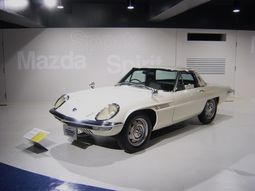
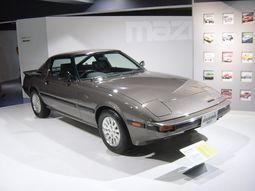
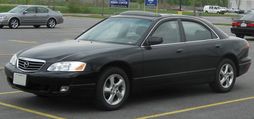





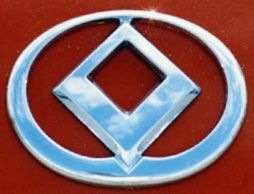
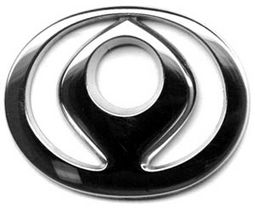
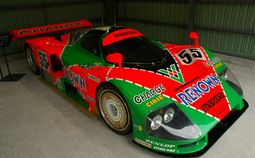
|